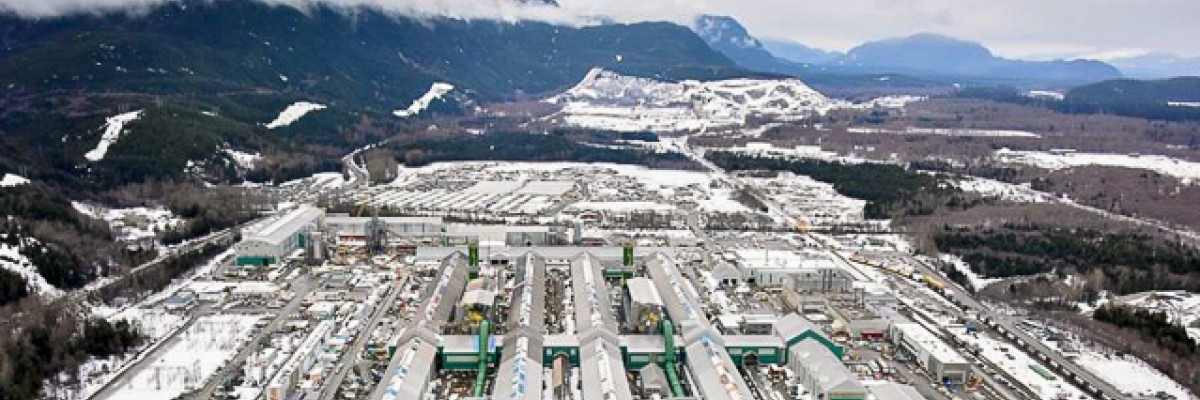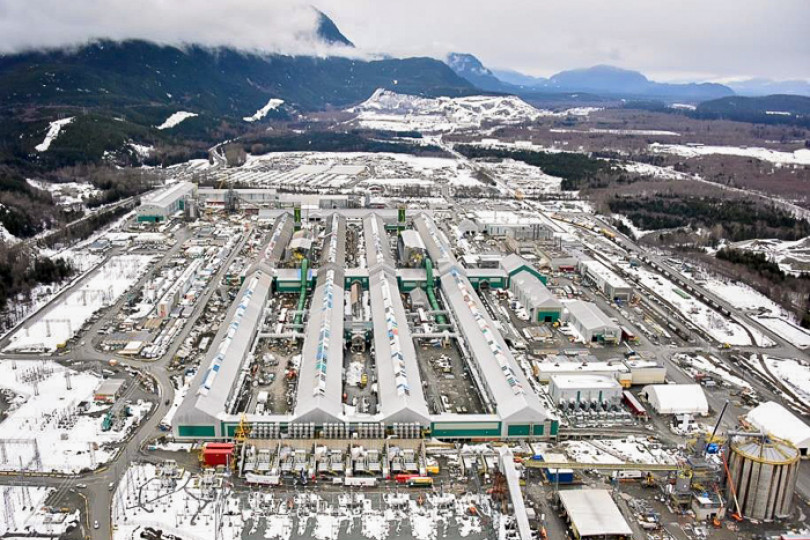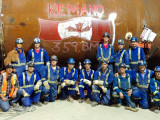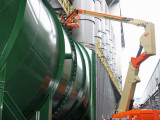Rio Tinto’s Kitimat plant ups production, cuts pollution
THE ALUMINUM INDUSTRY has been a primary economic driver for the town of Kitimat, British Columbia, for some 60 years. But the Rio Tinto Alcan smelter located there — featured in National Geographic as the largest in the world when it was built in the 1950s — was due for an upgrade to modernize its operations and reduce environmental emissions.
The Boilermakers, one of the key trades involved in the original construction of the smelter along with a dedicated hydroelectric plant, were called on again to play a significant role at the site, this time in a $4.8 billion upgrade referred to as the Kitimat Modernization Project (KMP). The upgrade is expected to increase smelter output by 48 percent, to 420,000 tons per year, and reduce overall emissions by 50 percent.
Work began in 2011 and was completed in July 2015. At its peak, the project employed 3,600 construction workers. Local 359 supplied over 300 journeymen and apprentices for the KMP and the associated Kemano hydroelectric power plant. In total, the project required 23 million man-hours to complete.
San Francisco-based Bechtel Corporation served as general contractor. Among the local subcontractors were CIMS Ltd., Bantrel Corp. and HB Construction Company Ltd.
“We had Boilermakers from 22 to 55 years old,” recalled HB General Foreman Chris Matheson. “We had the apprentices working with the experienced journeymen, teaching the younger crew members the tricks of the trade.”
Ken Stenfanson, a Boilermaker general foreman for Bantrel, said, “We had a crew that was focused on safety. We had a lot of heavy lifts that required teamwork. Heavy objects were lined up correctly, because we have people that have the skills to do the job. We had challenges, but the Boilermakers and Bantrel came together to get the job done for our client, which is what this is all about.”
Boilermakers at the Kitimat upgrade installed more than two kilometers (1.24 miles) of ductwork to carry waste gases to pollution control systems, which will effectively halve the smelter’s overall emissions. They also lifted complex ducting components and vessels weighing up to 146 metric tons into precise position.
“Most of the ducting installations were unique, with some difficult runs that allowed the Boilermakers to shine with their layout talents,” said Neil Biddlecomb, a 40-plus-year member of the Boilermakers and the CIMS general superintendent.
“We [had] an excellent crew of Boilermakers,” noted Brent Pennington, Boilermaker steward for the Bantrel crew. “Each piece [of ductwork] had a unique shape, size and weight, creating a different center of gravity. With proper planning and teamwork, we got the job done.”
Thirty-year member J’onn Giese, working for CIMS, noted, “The Boilermakers’ safety record was great. The job was enjoyable, and we got along great with the other trades. We have the same view: let’s get the client their smelter. We had hurdles we had to clear, but we did it. One reason for that was the good management we had. They worked to get us what we needed to do the job.” Mike Young, steward for the HB Boilermakers, said it was a “very good crew. Everyone looked forward to going to work each day to do the big lifts. And it has been a real joy working side by side with the other trades, everyone just wanting to do a good job each day.”
The teamwork demonstrated throughout the Kitimat Modernization Project culminated with the contractors, Boilermakers and other trades working together to provide the client with a best practices list for use with any future investments at the smelter.










